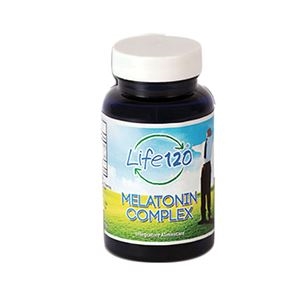Content:
- Melatonin For Toddlers: how to take, reviews, composition
- When and how to take Melatonin Sleep in powder and in capsules

Melatonin in saliva
Reagent kit for the quantitative determination of melatonin in saliva by enzyme immunoassay
Purpose: the kit is designed for the quantitative determination of melatonin in samples of human saliva by enzyme immunoassay.
Measurement range: 0.5 – 25 pg / ml.
Melatonin For Toddlers: how to take, reviews, composition
Sensitivity: 0.5 pg / ml.

When and how to take Melatonin Sleep in powder and in capsules
Preanalytical aspects: it is important to use a sampling system that does not destroy the analyte studied in saliva and does not change its concentration. Unlike serum or plasma, the level of analyte in saliva is very low. Therefore, its interaction with the surface of the collecting container is much more likely. As mentioned earlier, the analytes tested in saliva are small non-polar molecules. Such molecules can be absorbed by plastics. Polypropylene turned out to be the best plastic material, although its absorption properties strongly depend on the purity of the raw material. IBL introduced a special device for collecting saliva from ultrapure polypropylene called SaliCap®. The IBL system allows the patient to collect saliva through a polypropylene straw into a SaliCap® tube. Due to the short interaction time of saliva with the straw surface, the effect on the analyte under study is insignificant. The SaliCap® system Cat. #RE69991 can be ordered separately.
Test applications: melatonin, or N-acetyl-5-methoxy-tryptamine – the main hormone of the pineal gland. It is synthesized in the epiphysis of an intermediate metabolite of serotonin, N-acetyl serotonin. In humans, circulating melatonin profiles in biological fluids (saliva, serum, plasma) are an excellent marker of endogenous hours. At night, peak levels are around 3:00 am (acrophase) in most healthy people, but there are significant individual variations in melatonin levels: maximum melatonin values in the blood are observed between midnight and 4 hours in the morning. As a general modulator of biorhythms, melatonin is involved in the distribution in time of such functions as sleep, mood, reproduction, and activity of the immune system. The regulation of melatonin secretion is controlled by the sympathetic nervous system, which exerts its regulating effect through norepinephrine. The melatonin half-life is 45 minutes. This means that for research purposes, blood samples should be collected at short intervals in order to determine the period in melatonin production. In addition, a patient’s sleep disturbance overnight in order to collect samples may affect melatonin levels in the blood. These problems can be avoided by determining the levels of melatonin in saliva or melatonin metabolites: melatonin sulfate (6-sulfato-melatonin) and 6-hydroxy-glucuronide in the urine. Currently, the physiological and pathophysiological role of melatonin is being actively studied. Disruption of melatonin levels corresponds to sleep disorders, depression, schizophrenia, hypothalamic amenorrhea, and certain types of malignant neoplasms. Premature puberty may be due to the presence of a tumor in the epiphysis. If a tumor develops from the enzyme-active elements of the parenchyma, then hyperpinealism or dyspinealism prevails. The lack of secretion of melatonin by the epiphysis leads to an increased production of FSH and, consequently, polycystic ovary, a common hyperestrogenia. Against this background, uterine fibromatosis, dysfunctional uterine bleeding can develop. Hyperfunction of the epiphysis, on the contrary, induces hypoestrogenism, sexual frigidity. The data obtained, allowing to consider melatonin as one of the most powerful endogenous antioxidants. Disruption of melatonin production, both quantitatively and its rhythm, is the starting point, leading to initial stages of desynchronosis, followed by the emergence of organic pathology. Consequently, the very fact of violation of melatonin production can cause various diseases.
Circadian (circadian) rhythms are generated by the main driver of these rhythms, located in the suprachiasmatic nuclei (SCN) in the anterior hypothalamus. Individual genetically determined susceptibility to endogenous periodicity differs slightly from 24 hours (usually longer) and requires 24-hour daily synchronization using exogenous factors that control the biological clock of a living organism — synchronizers (rhythm drivers), which are regularly recurring environmental stimuli. Light is the main synchronizer for SCN, which is transmitted using specific photoreceptors of retinal ganglion cells. An important outgoing route leads from the SCN to the epiphysis, in which melatonin is synthesized. Epiphysis synthesizes melatonin at night and does not produce it throughout the day. The secretion of melatonin, which begins at night, is accompanied by the appearance of a need for sleep, including peripheral thermostatic mechanisms.
The duration of nocturnal secretion of melatonin is regulated by photoperiodicity, since light suppresses the production of melatonin. Patients with an autumn-winter depression in the Northern Hemisphere — a manifestation of seasonal affective disorder (ATS) —there is often a delay in melatonin secretion at dusk and an over-sensitivity to suppressing melatonin secretion under the influence of light. Moreover, a general increase in daily concentrations of melatonin was found. Abnormal changes in melatonin metabolism may be important for circadian disorders, since the suprachiasmatic nucleus is the area of greatest accumulation of melatonin receptors. Some data obtained in the study of ATS suggest that the duration of nocturnal secretion of melatonin is of great importance for the development of psychopathological disorders in winter.
It has been shown that the appearance of melatonin in the blood in the early evening is the most reliable biological marker of the circadian rhythm (samples obtained under dim light conditions). The beginning of the growth of melatonin synthesis in twilight light (DLMO) around 21:00 can be measured in blood or saliva. Both DLMO and the average concentration of hormone levels in the blood or saliva are used as circadian markers. The individual values of melatonin in the batiphase and acrophase are very stable. Thus, it will be quite sufficient to measure the time of the beginning of the growth of melatonin synthesis only once, in order to create a melatonin profile and then determine the displacement / disturbance of melatonin synthesis by DLMO.
Removing circadian light in the morning delays DLMO for 6 minutes a day and a total of 30 minutes for five days. The secretion of melatonin is suppressed by the action of light, especially in the evening, the sensitivity to such effects is so high that a light flux of 100 lux is enough to reduce its activity. Accordingly, even artificial light in a room can lead to a significant delay in the onset of the night excretion of melatonin.